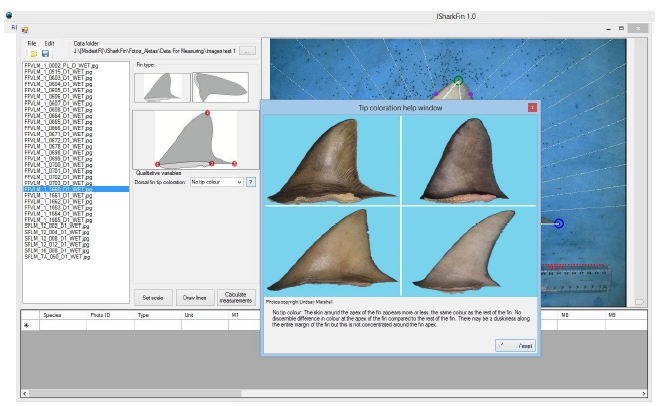New shark fin identification tool released
 News Release
News Release
Convention on International Trade in
Endangered Species of Wild Fauna and Flora (CITES)
29. January 2015
————————–
Geneva, 29 January 2015 – The Secretariat of the Convention on International Trade in Endangered Species of Wild Fauna and Flora (CITES), welcomes the new software package for the identification of shark fins released today by the Food and Agriculture Organization of the United Nations (FAO).
The software application called iSharkFin is an innovative system that uses machine learning techniques to identify shark species from shark fin shapes. The software has been developed by FAO in collaboration with the University of Vigo with financial support of the Government of Japan and the CITES Secretariat – using funds provided by the European Union
The iSharkFin is an interactive process. Users take a standard photograph, select some characteristics of a fin and choose a few points on the fin shape, iSharkFin will automatically analyse the information, and identify the shark species from which the fin originated. iSharkFin is available for the identification of 35 shark species from dorsal fins and 7 species from pectoral fins, all from species commonly seen in international trade, including some species listed in the CITES Appendices. Further species will be added to the system.
Commenting on the launch of the new tool, Secretary-General John Scanlon said “We have heard regular calls for accurate, simple to use and cost-effective ways to identify shark fins in trade – and this new tool responds to these calls. The iSharkFin is an excellent product for use by Customs, CITES authorities, and fishery inspectors and we congratulate the FAO on taking the initiative to prepare this tool and encourage its wide distribution and use”.
The new iSharkFin tool permits the identification of 35 shark species from dorsal fins and 7 species from pectoral fins. Many of these are found in international trade, including 4 CITES-listed species which are particularly fished and traded for their fins.
New CITES rules for sharks and manta rays
From 14 September 2014, international trade in specimens of five shark species and all manta ray species, including their meat, gills and fins, needs to be accompanied by permits and certificates confirming that they have been harvested sustainably and legally.
New controls adopted by CITES will apply to the oceanic whitetip shark (Carcharhinus longimanus), scalloped hammerhead shark (Sphyrna lewini), great hammerhead shark (Sphyrna mokarran), smooth hammerhead shark (Sphyrna zygaena), porbeagle shark (Lamna nasus) and manta rays (Manta spp.) as they are now included in CITES Appendix II.
Source: CITES
——
iSharkFin: an innovative software for the identification of shark species from the fins
iSharkFin is an expert system that uses machine learning techniques to identify shark species from shark fin shapes. The software has been developed by FAO in collaboration with the University of Vigo with financial support of the Government of Japan and the Convention on International Trade in Endangered Species of Wild Fauna and Flora (CITES).
iSharkFin takes an interactive process. Users simply need to take a standard photo, select some characteristics of a fin and choose a few points on the fin shape, iSharkFin will automatically analyze the information and identify the shark specie from which the fin comes.
iSharkFin is now available for the identification of 35 shark species from dorsal fins and 7 species from pectoral fins, commonly seen in international trade, including some species listed in the CITES Appendices.
Links to download the software and manual (pdf) :
– Download User Manual ( PDF )

